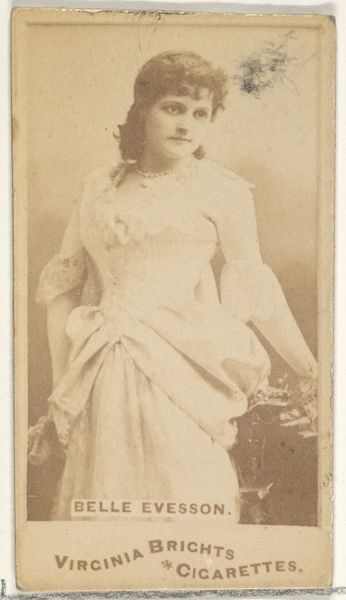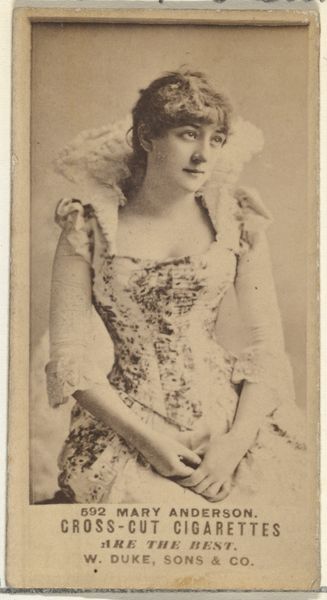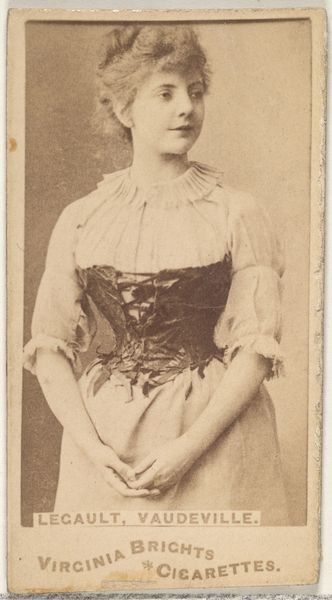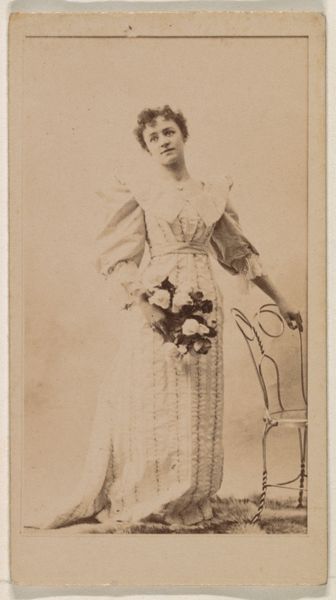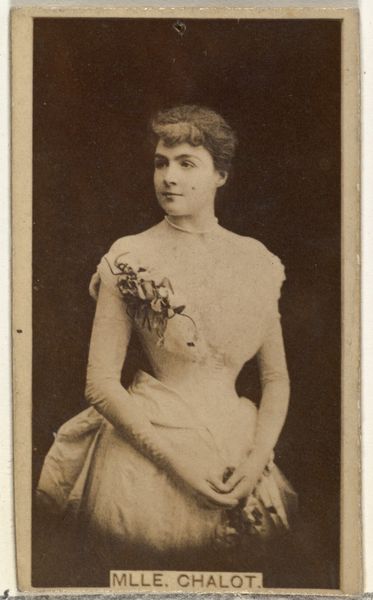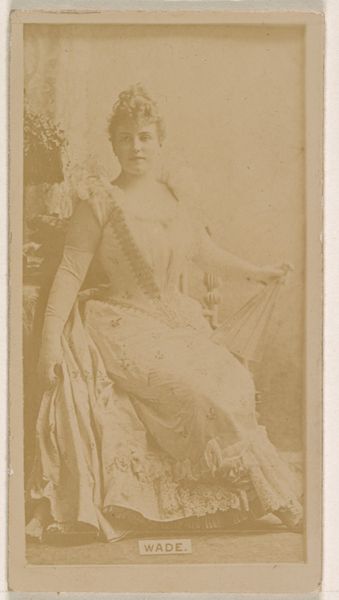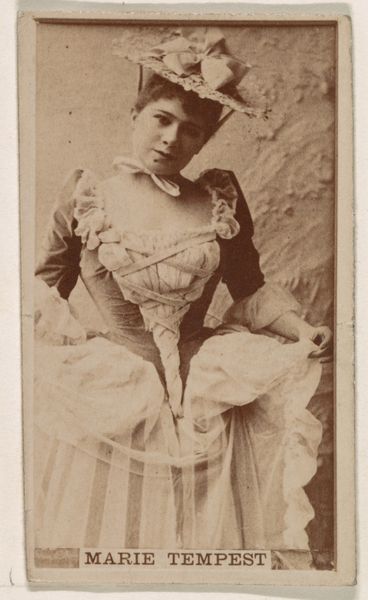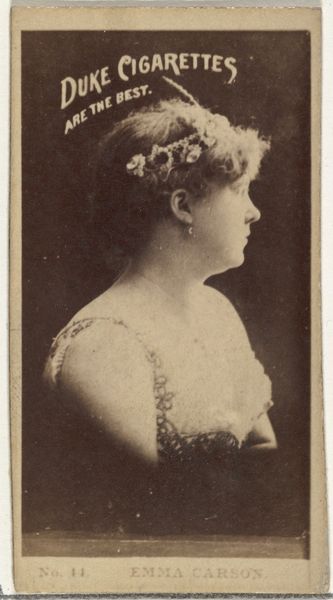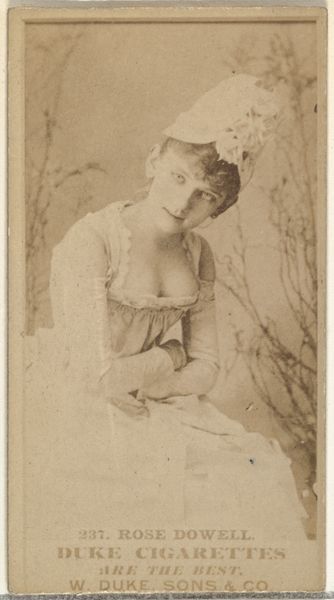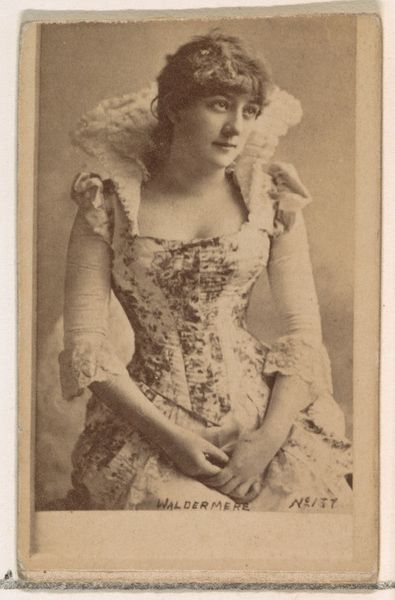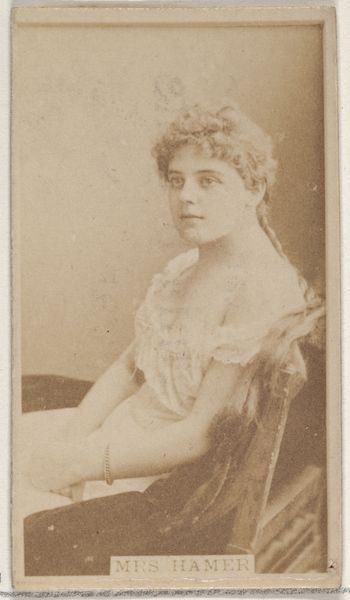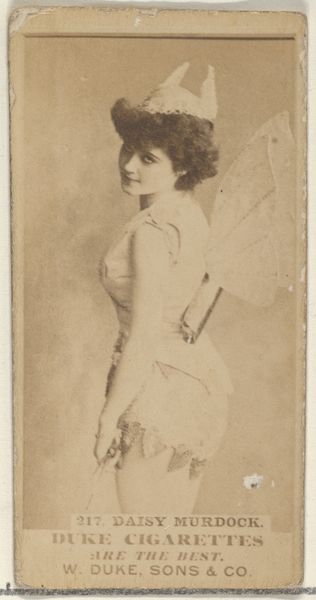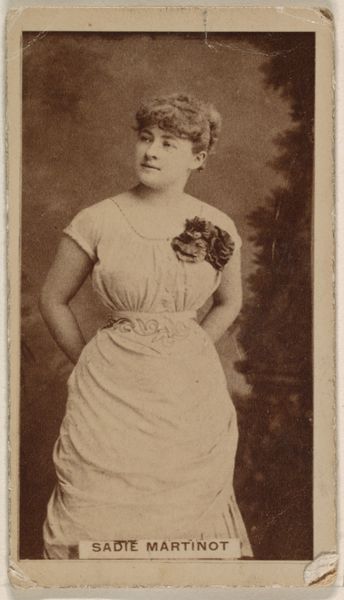
Miss Marguerite, from the Actresses series (N203) issued by Wm. S. Kimball & Co. 1889
0:00
0:00
drawing, print, photography
#
portrait
#
drawing
#
pictorialism
# print
#
photography
#
19th century
Dimensions: Sheet: 2 5/8 × 1 3/8 in. (6.6 × 3.5 cm)
Copyright: Public Domain
Curator: This is "Miss Marguerite, from the Actresses series (N203) issued by Wm. S. Kimball & Co.," dating to 1889. It's currently housed at the Metropolitan Museum of Art. Editor: The first thing that strikes me is how carefully constructed the softness of it is. It feels less about capturing a true likeness and more about manufacturing an image of ideal beauty. Curator: Absolutely. Remember this is a tobacco card, a mass-produced image. The company sought to align smoking with sophistication and allure. The “Actresses Series” traded on the fame, beauty, and perhaps the perceived scandalousness of actresses. It creates an entire mythology. Editor: Right, it's not exactly fine art; it’s tied directly to consumerism and industry. I am curious about the printing process itself. These were produced on a large scale. What materials and labor went into these ephemeral items designed to be, essentially, disposable? Curator: And the woman herself, carefully posed. Notice how the gaze, averted slightly, conveys both availability and demureness. The floral decoration—not too extravagant, but certainly present—signifies perhaps purity tinged with allure. Each choice feeds the symbolic language. Editor: That’s the thing, isn’t it? They’re selling cigarettes, but what they’re really selling is an aspirational lifestyle packaged with gendered and classed ideas of beauty and success. The tactile experience matters too. I wonder what papers and inks Kimball & Co. employed. Was it a cheaply done photograph or something a bit more thoughtfully produced? Curator: There is this constant interplay in commercial art between high-minded associations, or what some would call illusions, and very practical means of production. It also tells an interesting story about the increasing commodification of fame itself. Editor: For sure. We often elevate artistry while obscuring how many artworks stem directly from processes meant to generate capital. Analyzing the materials helps pull apart these layers and reveal production's tangible dimension. Curator: Well said. Thinking about Marguerite, caught between commerce and symbolism, provides a telling snapshot of the era. Editor: It does, from cigarette production to idealized femininity. The connections are unexpectedly fascinating.
Comments
No comments
Be the first to comment and join the conversation on the ultimate creative platform.
